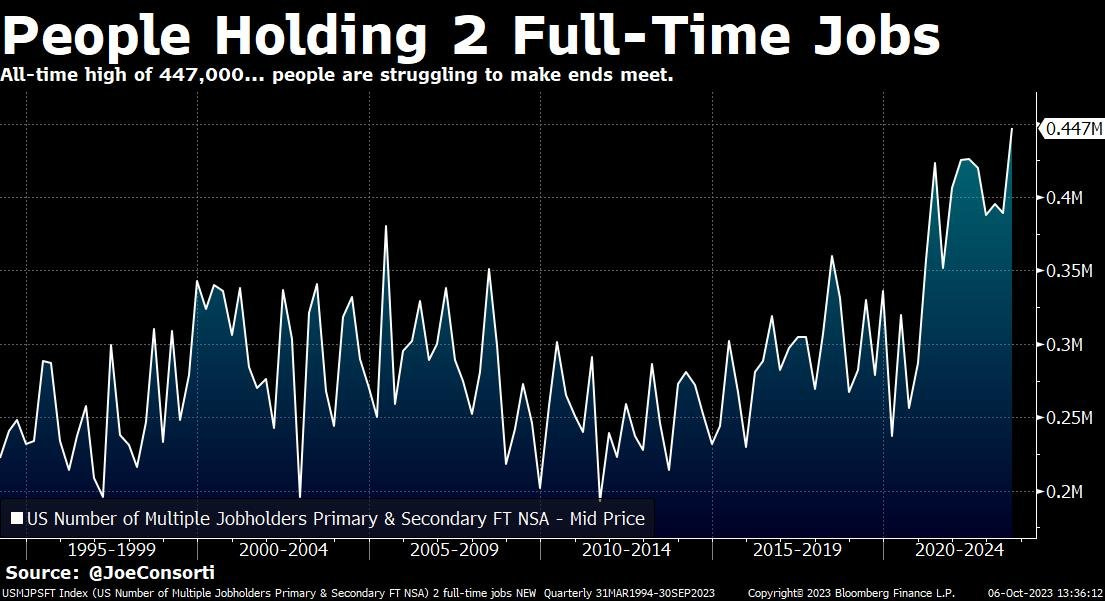2:00 read | Chime in on LinkedIn here and Twitter here
Hirewell’s Interim Talent Placements went up 2x since in Q3 compared to Q3 2022.
What does that mean? And is it a good thing?
The job reports for the past year have been on fire. It seems like every month blows the estimates out of the water. As CNBC reported “Nonfarm payrolls increased by 336,000 for the month, better than the Dow Jones consensus estimate for 170,000.”
For the past year the workflow has been:
👉More jobs -> Fed concerns about continued inflation -> high interest rates
But something *feels* off, right? Every time I comment on this, I get flooded with a few comments that the numbers are wrong, it’s a conspiracy, etc.
In reality, there’s always a deeper level. The U.S. Bureau of Labor Statistics report that moves the markets comes from company surveys. But they also do household surveys. And those tell more of the story.
For the past few months, full time employment has been shrinking while part time has been increasing.
As ING reported in August: “The household survey shows part-time employment rose just under 1mn last month while full-time employment fell nearly 600k.”
The Kobeissi Letter added to this “Fantastic graphic showing that a record 447,000 Americans are now working 2 full-time jobs.”
VettaFi has a long term graph that shows on a percentage basis, full time is still on an upward trend. Far higher than part time employment (which isn’t always the case). The down trend is more recent (i.e. this year).
Relating this back to Hirewell’s 2x Interim Talent placement (indy consultants, freelancers, etc.) It’s not the same as part time work, these are 40/hr+ a week jobs. But they are temporary. (Side note: all jobs are temporary, the idea for “permanent hiring” is silly but another rant for another day.)
But what it has in common: these are companies who have business needs, but not yet ready to commit to full time hiring. Tight budgets, financial concerns, uncertainty about longer term project needs, etc.
The good news is: it’s a normal part of a recovery cycle. When every down labor market that I’ve seen in my career rebounded, it started with interim hires. Especially in tech. Especially when it’s mid-year.
Which is exactly what we’re seeing.
Find people you need to get the work done now. Redo budgets and hiring plans. Convert them to full time and/or open new positions.
So, that’s a good thing.
The bad news is: there’s no guarantee that will happen again. Or if the full time hiring surge happens, it’s going to be 2024.
No one can predict the future. Least of all recruiters.
You can follow me on LinkedIn here and Twitter here. Join the discussion on this LinkedIn post (or give it a 👍) here.







Share this post